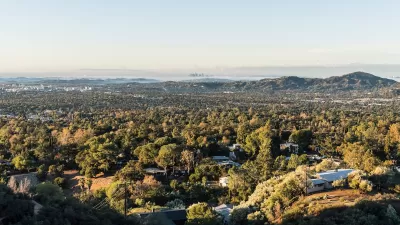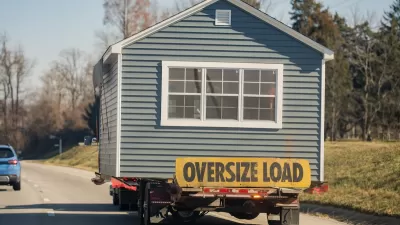Scrambling to grab that elusive “American Dream” of homeownership, millions plunged into the subprime mortgage market to build wealth through appreciation (if not speculation). Pundits cheered as the ownership rate crept up, lauding the pluck of aspirational minority and immigrant families.There’s a reason it is called subprime, though. Lenders offered a smorgasborg of loan “products,” but the bottom line was that they are all very costly for the borrower – often entailing adjustable-rate surprises in the 30 percent or higher range.
Scrambling to grab that elusive "American Dream" of homeownership, millions plunged into the subprime mortgage market to build wealth through appreciation (if not speculation). Pundits cheered as the ownership rate crept up, lauding the pluck of aspirational minority and immigrant families.
There's a reason it is called subprime, though. Lenders offered a smorgasborg of loan "products," but the bottom line was that they are all very costly for the borrower – often entailing adjustable-rate surprises in the 30 percent or higher range.
With prices flat and interest rates creeping up, defaults on subprime loans are skyrocketing, with many borrowers falling behind after just a few months. The lenders who have not yet filed for bankruptcy are stampeding to the exits. A great number of them, though, took billions out of these businesses before they went belly-up.
the real cost will be born by the borrowers, who have no financial cushion. They had hoped that home appreciation would build some wealth. Wages, by and large, have not done the job even with a growing economy.
Their communities will also pay. A lot of those subprime buyers have snapped up the little ranches and Cape Cods in the 1950s inner suburbs, giving a new lease on life to communities that professionals and more affluent buyers have skipped over. Though the houses in these cul de sacs can still look neat, with their hedges and lawns nicely clipped, many of these communities have stagnated, sunk into poverty, or hovered at the tipping point for years. Even modest appreciation would solidify middle-income status for struggling wage earners, but the outlook now is for slippage, possibly long-term price drops.
As the pain spreads, there will be much handwringing and fingerpointing (assuming it does not incite a broader market meltdown as some fear). But the warning bells were rung early and often. No one in Congress, at Freddie Mac, Fannie Mae, or in the mortgage industry should have been unaware of the lax regulation and the likelihood of high levels of defaults. But the pickings were too lush, and the lobbying largesse was spread too thick.
And when things stabilize, the mess will get swept under the rug, because, after all, maybe a few hundred thousand borrowers, or a few million – as in the similarly greed-driven savings and loan collapse in the late 1980s – will be hurt, and they'll be largely invisible because they don't stroll the board rooms of banks or live in the nice neighborhoods of media executives.
There used to be names for this kind of thing, though. One was fraud and the other was usury. Maybe our language will be enriched by them again.

Study: Maui’s Plan to Convert Vacation Rentals to Long-Term Housing Could Cause Nearly $1 Billion Economic Loss
The plan would reduce visitor accommodation by 25,% resulting in 1,900 jobs lost.

North Texas Transit Leaders Tout Benefits of TOD for Growing Region
At a summit focused on transit-oriented development, policymakers discussed how North Texas’ expanded light rail system can serve as a tool for economic growth.

Why Should We Subsidize Public Transportation?
Many public transit agencies face financial stress due to rising costs, declining fare revenue, and declining subsidies. Transit advocates must provide a strong business case for increasing public transit funding.

How to Make US Trains Faster
Changes to boarding platforms and a switch to electric trains could improve U.S. passenger rail service without the added cost of high-speed rail.

Columbia’s Revitalized ‘Loop’ Is a Hub for Local Entrepreneurs
A focus on small businesses is helping a commercial corridor in Columbia, Missouri thrive.

Invasive Insect Threatens Minnesota’s Ash Forests
The Emerald Ash Borer is a rapidly spreading invasive pest threatening Minnesota’s ash trees, and homeowners are encouraged to plant diverse replacement species, avoid moving ash firewood, and monitor for signs of infestation.
Urban Design for Planners 1: Software Tools
This six-course series explores essential urban design concepts using open source software and equips planners with the tools they need to participate fully in the urban design process.
Planning for Universal Design
Learn the tools for implementing Universal Design in planning regulations.
City of Santa Clarita
Ascent Environmental
Institute for Housing and Urban Development Studies (IHS)
City of Grandview
Harvard GSD Executive Education
Toledo-Lucas County Plan Commissions
Salt Lake City
NYU Wagner Graduate School of Public Service






























